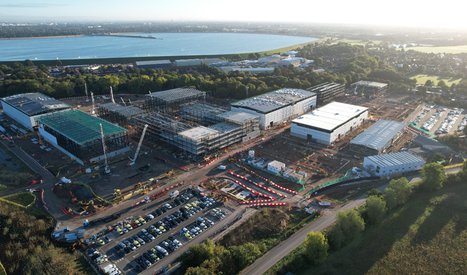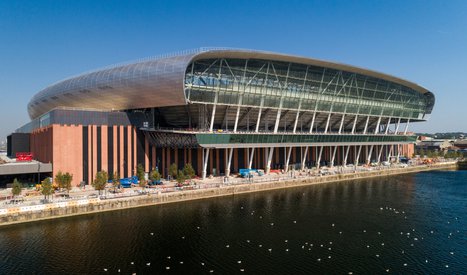V&A Dundee is Scotland’s first museum dedicated to design, so for us, there was something special about being part of its creation.
The museum is made up of two separate three-storey buildings with sloping external walls, which merge together to form one building at roof level - the building changes shape and orientation at each level and is cladded with decorative precast concrete, designed to invoke a feeling of witnessing the beauty of the Scottish cliffs.
- Location
- Dundee, Scotland
- Client
- Dundee City Council
- Main Contractor
- BAM Scotland
- Engineer
- Arup
- Architect
- Kengo Kuma & Associates
- Tonnage
- 780

The building structure is made up of in-situ concrete sloping walls around the perimeter, with further concrete walls and cores internally to provide stability.
The elevated structural steel and metal decking floors span between the external walls and internal cores at three levels to tie the whole structure together. We used long span beams and trusses to achieve large areas, that would be suitable for the museum galleries. The nature of the design required large numbers of heavy connections between the floor beams and the concrete walls. To achieve the vision for this project, we used heavily engineered cast-in plates and site welded connections that were developed specifically for this building.

With so much interdependency between the steel and concrete elements, the construction sequence for this building was developed collaboratively by BAM and all the main trades. The working area around the site was very limited, so we worked closely with all trades to ensure we achieved a successful, and beautiful end result, which will exist to inspire many generations.
Sustainability ratings and success
The building is rated BREEAM ‘Excellent’, thanks to its use of renewables and exceptional insulation. All materials used were carefully selected to meet the very highest standards of responsible sourcing. The museum also uses air source heat pumps in combination with geothermal energy from 30, 200-metre deep bore holes’ to heat and cool the building. The museum’s expansive flat roof was not only a potentially significant source of heat loss, but also required careful drainage management to prevent long-term maintenance issues. This was tackled with the use of over 6,500 m2 of insulation.



